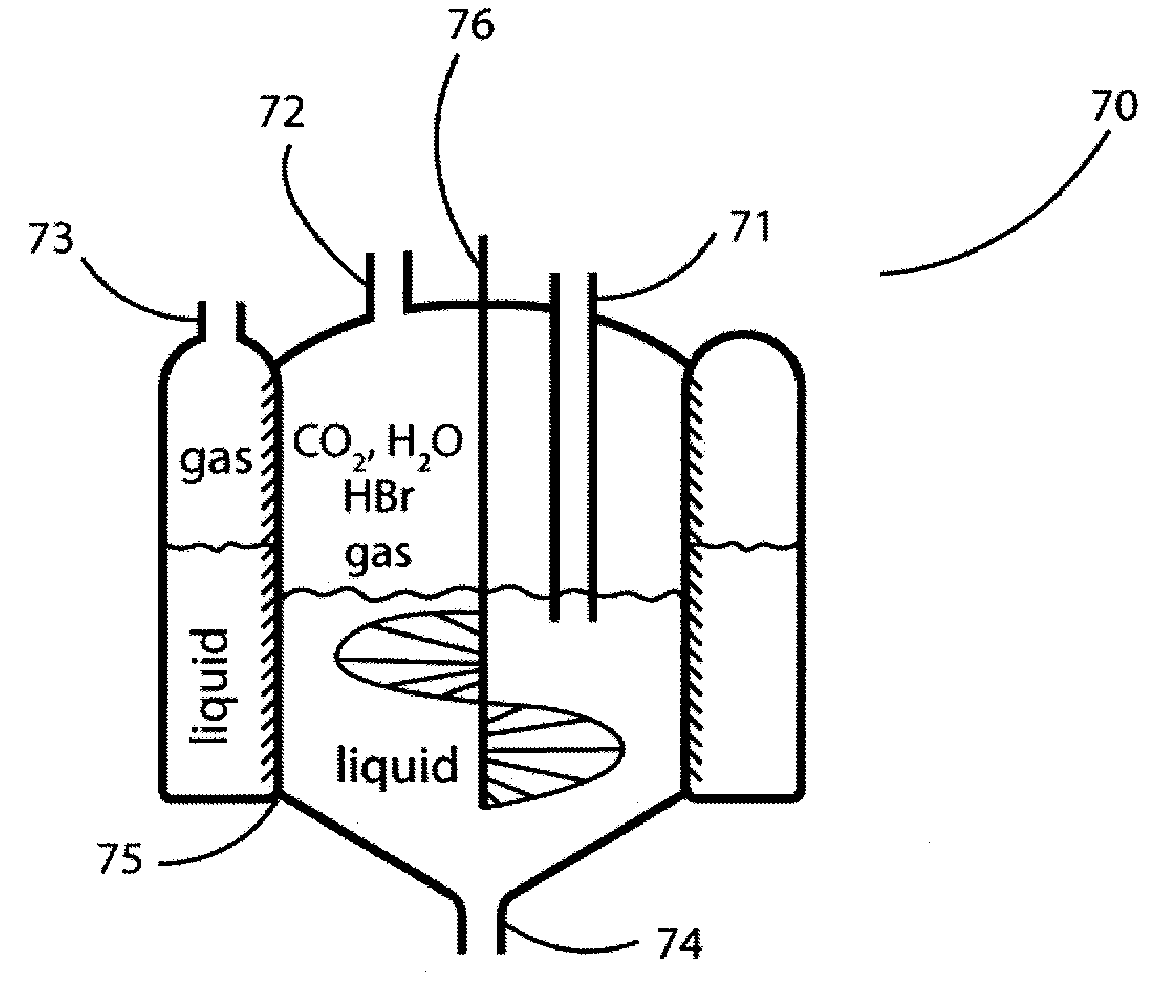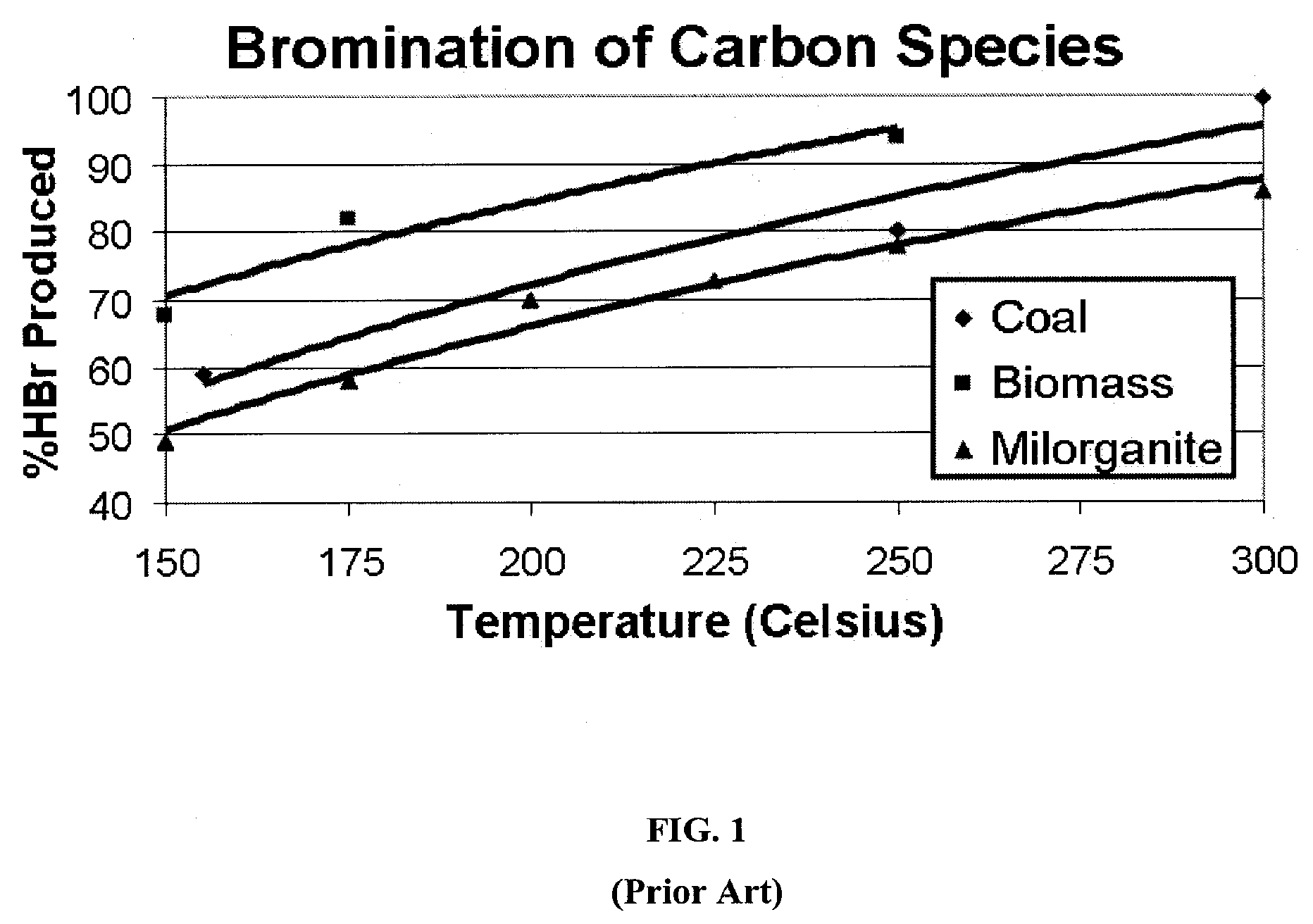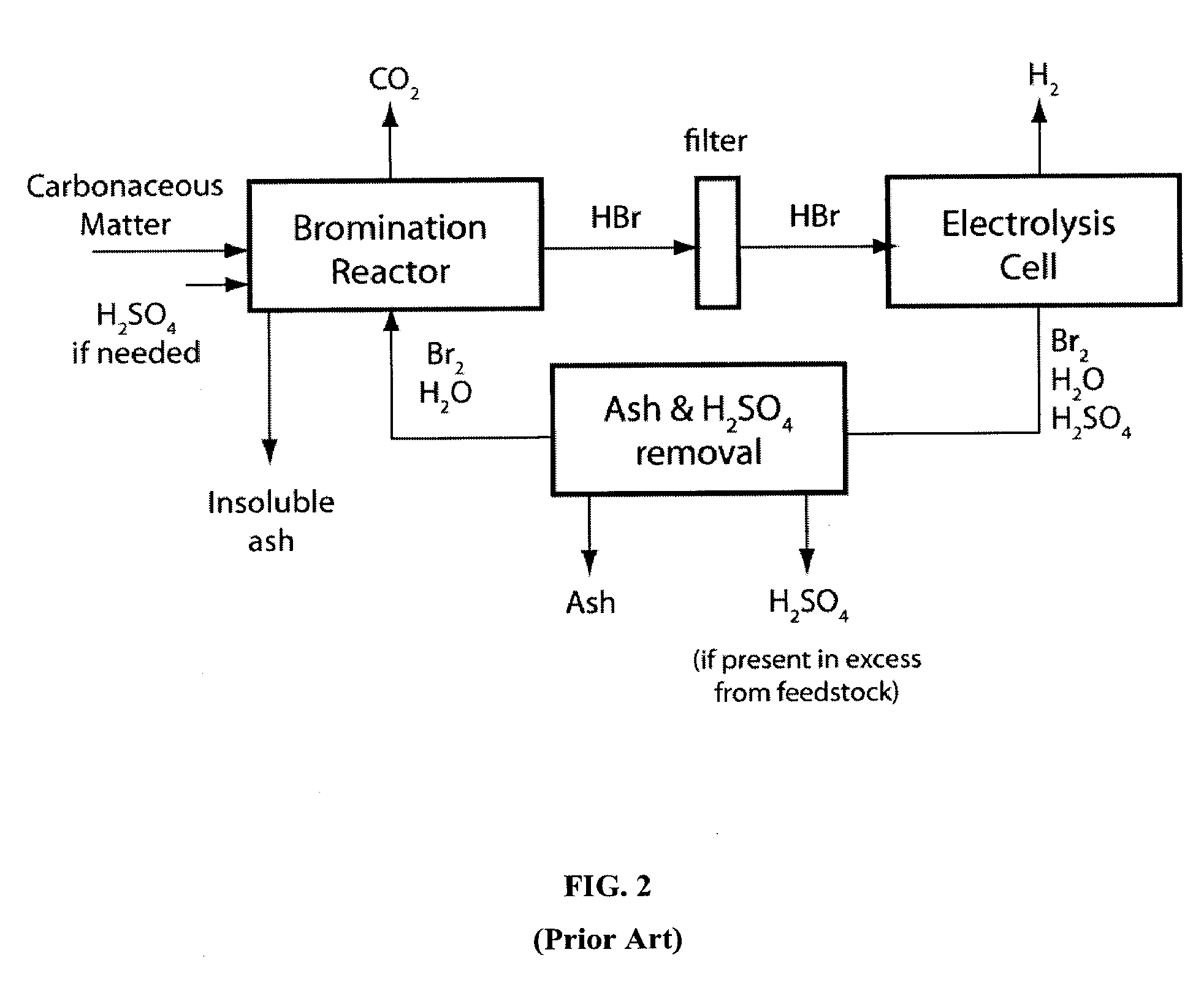Waste Treatment and Energy Production Utilizing Halogenation Processes
a technology of halogenation process and waste treatment, which is applied in the direction of liquid gas reaction process, chemical/physical process, energy input, etc., can solve the problems of complex process, high energy consumption, and rapid depletion of oil and natural gas reserves, and achieve the effect of reducing energy
- Summary
- Abstract
- Description
- Claims
- Application Information
AI Technical Summary
Benefits of technology
Problems solved by technology
Method used
Image
Examples
Embodiment Construction
[0080]While various embodiments of the invention have been shown and described herein, it will be obvious to those skilled in the art that such embodiments are provided by way of example only. Numerous variations, changes, and substitutions will now occur to those skilled in the art without departing from the invention. It should be understood that various alternatives to the embodiments of the invention described herein may be employed in practicing the invention.
[0081]Methods, processes, devices, structures, apparatuses and systems of aspects and embodiments of the invention can overcome various problems and limitations associated with prior art systems and methods. In some embodiments of the invention, methods and apparatuses for the treatment of waste material to produce useful products are provided. In other embodiments, methods and apparatuses for the treatment of waste material and the creation of high-pressure gas to operate a prime mover (e.g., turbine, motor, turbine and g...
PUM
| Property | Measurement | Unit |
|---|---|---|
| temperature | aaaaa | aaaaa |
| temperature | aaaaa | aaaaa |
| pressure | aaaaa | aaaaa |
Abstract
Description
Claims
Application Information
 Login to View More
Login to View More - R&D
- Intellectual Property
- Life Sciences
- Materials
- Tech Scout
- Unparalleled Data Quality
- Higher Quality Content
- 60% Fewer Hallucinations
Browse by: Latest US Patents, China's latest patents, Technical Efficacy Thesaurus, Application Domain, Technology Topic, Popular Technical Reports.
© 2025 PatSnap. All rights reserved.Legal|Privacy policy|Modern Slavery Act Transparency Statement|Sitemap|About US| Contact US: help@patsnap.com



